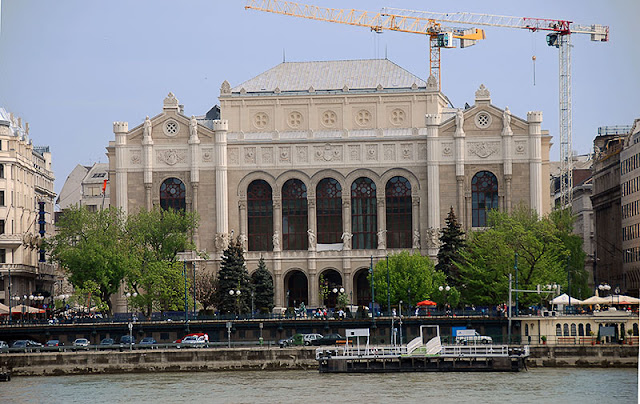Ligeti also sculpted important politicians, artists, and even the royal Austro-Hungarian family. But his most famous statue is Anonymous, which for many captures the essential Hungarian identity.
It was thus a complete surprise for me to read in Jewish Budapest: Monuments, Rites, History (by Kinga Frojimovics, Geza Komoroczy, Victoria Pustai and Andrea Strbik) the following passage:
"The Regent [Miklos Horty] issued privileges at special requests for some people who now fell under the (Anti-) Jewish Laws but who had outsanding scholarly, artistic, economic achievements to their credit or who filled prominent public roles. . . . Among them were several prominent. . . writers and artists, [including] . . Miklos LIgeti, the sculptor of the statue (1903) of the first Hungarian chronicler, Anonymous, located in Varosligeti (City Park)" (p. 402).
That Ligeti could be Jewish seemed almost impossible.
So I did some research. Miklos Ligeti, sculptor is listed in the Maygar Zsido Lexicon (Hungarian Jewish Encylopedia), published in 1929 in Hungarian. Ligeti is also listed on ArtCult: Around Jewish Art,
The answer to how Ligeti could be Jewish but seem (in his art) so un-Jewish is of course the widespread cultural assimilation of Hungarian Jews in the last part of the 19C and first part of the 20C. The historian and political writer Ferenc Festo, who includes Ligeti in his discussion, explains this more thoroughly.
Ligeti died in 1944 (the death year for so many Budapest Jews). As Jewish Budapest goes on to explain, the special "accommodation" for outstanding Jewish citizens declined after the Arrow Sword terrors. ArtCult says that Ligeti "disappeared" in Budapest in 1944. His wikipedia page and other websites place his death on December 10, 1944, the day the Budapest Ghetto was sealed. Interestingly, in a book published by the museum his family runs, Ligeti Miklos by Prohaszka Laszlo, Ligeti's death is also placed on December 10, 1944--though there is no mention (as far as I can tell using Google translate) of his residing in the Ghetto or dying because of the Holocaust.
Ligeti's own funeral monument is located in Kerepesi Cemetery, though his body (which was lost) is not. The monument sculpted by his friend Jeno Bory poignantly depicts the missing presence.
.
In the abstract to her doctoral thesis, Treat ment of Miklós Ligeti ,sculptor’s ouvre, Judit Mazányi writes that "Surveying his oeuvre, it became indisputable that we were not kept waiting for the rediscovery of the life-work of a forgotten genius sunken into oblivion":
"Sadly, no drawn sketches have survived from the artist, nor sculpture studies of a notable number, through which the evolution of his ideas could have been traced. Many hundreds of his drawings fell victim to the mistaken judgment of his family members, who, in the cultural-political situation following the war might have thought that there would not be any chance to present his oeuvre as integrated into Hungarian art. I do not know which of his works were placed in a private safe during World War II as planned by the artist, but it is common knowledge that the valuables preserved in these were hardly spared in the course of wartime plunder, and these works have most probably been destroyed."
The hooded face, the body-less monument, the Jewish identification, the non-Jewish artist: it is tempting to draw these together. But the truth of Ligeti's life is surely more complex than these teasing traces suggest. It is also as incompletely known as those of so many Hungarian artists who are no longer familiar to us or to their fellow citizens--either because of history, neglect, or accident.
Whomever Ligeti was is now gone.
#MiklosLigeti
#JewishBudapest




















































